Fiscal Year July 1, 2014–June 30, 2015
Annual reviews are all about the numbers. They show in figures, dollars and cents, percentages, and decimals all the work an organization has done in the past year. While this annual review summary does highlight the Department’s key statistics from July 1, 2014, through June 30, 2015, we’ve also tried to tell the conservation success stories not always reflected through numbers.
These success stories are made possible by Missourians who care deeply about conservation and dedicate dollars to ensure a conservation legacy for future generations. The Department works diligently to carry out our mission of protecting fish, forests, and wildlife in the state and to help people discover nature. Thank you for partnering with us year after year on that mission. These are your success stories, too.
Missouri State Budget
- Conservation - 0.6% The Conservation Department represents less than 1 percent of the total state budget and receives no state general revenue
- Natural and Economic Resources - 3.7%
- Transportation - 8.3%
- Government Services -15.4%
- Education - 27.1%
- Health and Social Services - 44.9%
- Total State Budget - $26,028,776,360
Receipts
- Conservation Sales Tax - $110,528,741
- Permit Sales - $33,095,119
- Federal Reimbursements - $26,910,971
- Sales and Rentals - $8,729,217
- Other Sources - $3,458,705
- Interest - $368,595
- Total Receipts.- $183,091,348
Interest
- County Assistance Payments - 0.88%
- Capital Improvements - 9.81%
- Information Technology - 7.78%
- Fisheries - 7.98%
- Forestry - 10.40%
- Wildlife - 12.54%
- Outreach and Education - 9.50%
- Private Land Services - 4.85%
- Protection - 9.09%
- Resource Science - 7.61%
- Regional Public Contact Offices - 1.17%
- Administrative Services - 7.69%
- Human Resources - 1.37%
- Design and Development - 7.76%
- Administration - 1.57%
- Total Disbursements -100%
Healthy Fish, Forests, and Wildlife
The Topeka Shiner Shines
In October 2014, Department fisheries biologists carefully poured a bucket of approximately 9,800 Topeka shiners into a clear stream on the Union Ridge Conservation Area in northeast Missouri. Hope filled their eyes and they cheered as the endangered minnow quickly darted off to its new home. As part of the restoration stocking effort to aid this federally endangered minnow in its native habitat, the Department also released 50 orange spotted sunfish along with the Topeka shiners, because shiners only lay eggs in active sunfish nests.
The Call of the Wild: Elk in the Ozarks
The unique sound of elk bugling through the crisp air is another sign of fall at Peck Ranch and Current River conservation areas. The Department began a five-year elk research project to help biologists better understand how elk survival and reproduction differ each year. As the elk herd expands, the Department continues to work with landowners to improve habitat acres around the conservation areas. This habitat work offers big rewards for landowners, as well as unique opportunities, as one landowner experienced firsthand, waking up and seeing nearly 75 elk out his window.
It Takes a Team to Fight Wildfires
The Conservation Department worked with fire departments across Missouri to suppress 2,923 wildfires that consumed 22,044 acres. Two Department programs improve fire-protection efforts at the local level. The Excess Property program provides equipment and MDC staff provide training, which helps rural fire departments respond more effectively and efficiently to fires throughout the state. The Department, in cooperation with the U.S. Forest Service, provided $393,547 in matching Volunteer Fire Assistance grants to 189 rural volunteer fire departments this fiscal year. The money is used to purchase personal protective gear and firefighting equipment, which is used in fighting wildfires as well as structure fires. Over the past 30 years, the Department has provided more than $7.5 million to rural fire departments.
Science-Based Conservation
The Department uses a science-based approach to managing fish, forests, and wildlife in the state, and research projects are one of the ways the Department obtains critical information. For example, the Department is conducting a five-year wild turkey research project to monitor populations in several counties across the state. This research includes banding and putting radio transmitters on wild turkeys to determine gobbler and hen survival. The research will also help determine what proportion of the banded wild turkeys is harvested by hunters. The results will inform wild turkey management decisions and sustain opportunities for all Missourians to view this majestic bird in the wild.
Manage Lands in Public Trust
Wetland Conservation Area Renovations
In October 2014, the Department and Ducks Unlimited invited the public to a dedication of Duck Creek Conservation Area, located in southeast Missouri, to celebrate renovations completed to date on the wetland area. The event, however, marked a bigger celebration — the ambitious partnership established 10 years earlier to rehabilitate and enhance five of the Department’s oldest wetland conservation areas (Schell Osage, B.K. Leach, Montrose, Duck Creek, and Fountain Grove). Many of these wetland areas are celebrating their 50th birthdays, so these renovations are critical to the long-term success of the areas and for fostering the next generation of waterfowl hunters.
Managing Public Land for Missourians
The Department manages 955 properties, totaling nearly 1 million acres statewide, for the purpose of restoring and conserving fish, forest, and wildlife resources and providing outdoor opportunities for Missourians. This year, Department staff conducted habitat management activities on nearly 185,000 acres of public land, including wetlands, woodlands, forests, savannas, croplands (through permittee farmers and food plots), grassland, prairies, old fields, and glades. Public review of conservation area plans also offers an opportunity for Missourians to comment about management on a specific area. In fiscal year 2015, staff posted 69 area plans, covering 115 areas, online for public comment.
Sound Financial Accountability
New Electronic Nursery System
The state nursery annually grows and distributes close to 3 million seedlings of more than 60 species of trees. These seedlings, planted on both public and private lands statewide, include trees and shrubs suitable for reforestation and wildlife habitat restoration. With the nursery filling more than 10,000 orders annually, an electronic ordering system was implemented this year to integrate the inventory tracking and seedling delivery. This new technology also allows customers to pay for seedlings online.
Citizen Involvement/Education
Helping Kids and Families Discover Nature
Helping kids and families discover nature is a key part of the Department’s mission. Last year, the Department held six Discover Nature Girls Camps for girls ages 11–15 to get young women excited about the outdoors. Camp classes include hunter education, archery, canoeing, fishing, tree-stand safety, and Dutch oven cooking. The Department’s Discover Nature Schools conservation education curriculum, which is used in 99 percent of Missouri school districts for grades pre-K through 12, help teachers engage students with hands-on, outdoor learning. In addition, the Discover Nature — Fishing program helps kids and families have fun in the outdoors by learning to fish. Last year, more than 5,000 people learned to fish for the first time through this program.
Archery in the Schools Program Builds Champions
Missouri National Archery in the Schools Program (MoNASP) not only promotes education, self-esteem, and physical activity for kids in grades 4–12, but it also builds national champions. In May, Sarcoxie R-II fifth-grader Max Wangler took first place at the National Archery in the Schools Program/International Bowhunting Organization 3-D Challenge national tournament in Kentucky. He received the top score for all Elementary Division shooters. The Department provides MoNASP grants to schools for equipment, as well as free teacher and staff training for those administering the program. More than 135,000 Missouri students from 500 schools participate in MoNASP.
Community Conservation in Urban Areas
Conservation in urban areas educates many Missourians and exposes them to natural habitats that may not otherwise be available. The Community Conservation Grant Program awarded $100,000 to five urban habitat restoration and monitoring projects in the St. Louis metropolitan area, including urban native bee monitoring, prairie reconstruction, and woodland restoration. The Tree Resource Improvement and Maintenance (TRIM) cost-share program continues to receive interest from communities of all sizes across the state. The program provides reimbursements of $1,000–$10,000 to assist government agencies, public schools, and non-profit groups with trees on public lands. In FY15, the Department funded 48 projects with nearly $500,000 spent on these community projects.
Helping Missouri Landowners with Key Habitat Conservation
The Department received $1.3 million in federal grant money from the U.S. Department of Agriculture to help private landowners in Missouri improve grasslands, glades, and woodlands for both wildlife habitat and agriculture production. The Department will match the federal grant money over the next five years through its existing Private Land Services Program, which provides expert advice and assistance to more than 29,000 private landowners in Missouri each year.
Rod and Reel Loaner Program
The Department makes fishing more accessible through the Rod and Reel Loaner Program. The program, which is available in 72 locations across the state, allows individuals to check out fishing poles and tackle boxes for free. The fishing poles are equipped with standard spincast reels. The tackle boxes are supplied with hooks, sinkers, and bobbers for basic fishing opportunities. For a loaner location near you, visit on.mo.gov/1f4bgXO.
Engage Partners at All Levels
Feeding the Hungry through Share the Harvest
While hunters often share their deer photos each season with family and friends, they rarely take credit for the gift that comes next — helping to feed hungry Missourians through their deer meat donation. Through the Share the Harvest program, made possible by the efforts of the Department, Conservation Federation of Missouri, local charitable organizations, and local meat processors, more than 3 million pounds of deer meat has been donated to local food pantries since the program started in 1992. In 2014, almost 4,000 hunters donated 213,443 pounds of venison to the less fortunate in Missouri. Hunters can donate all or part of their deer to Share the Harvest.
Community Fisheries Assistance
Through the Community Assistance Program and other partnership programs, the Department enters into agreements with cities, counties, state and federal agencies, businesses, foundations, schools, and colleges to cooperatively develop and maintain facilities for anglers and boaters at lake and stream areas. Currently, there are 117 partners in the cooperative management of 166 public lakes, 43 stream access areas, four lake access areas, 10 aquatic education ponds, and 15 lake access facilities. New agreements were made with the cities of Unionville, Bethany, Canton, Fayette, Holden, Lawson, and Macon this fiscal year.
Top Conservation Stories of Fiscal Year 2014–2015
MO Hunting App
The Department developed the MO Hunting mobile application, which enables Missouri hunters, anglers, and trappers to purchase and view annual permits. Deer and turkey hunters also can Telecheck their harvests using the app, which provides an electronic permit stored on your mobile device. New regulations consider this to be a valid permit. The MO Hunting app had more than 27,000 downloads in FY14–15.
Listening to Missourians
Delivering excellent public service means listening to and understanding what Missourians say about conservation programs and services. In fiscal year 2015, there were 129 public engagement opportunities, including deer management and chronic wasting disease meetings, annual hunter surveys, conservation area plan comment periods, regulations committee comments, and unstaffed shooting range surveys.
Shooting Range Renovations
The Department began construction of a new, state-of-the-art staffed shooting facility at Busch Shooting Range in St. Charles. The new range will incorporate the most current national shooting range design standards, including numerous improvements for user convenience, safety, and reduced waiting times. Originally built in 1975, the Busch range sees more than 40,000 shooters annually. The Department also completed major renovations at the unstaffed Rocky Fork Lakes Shooting Range in Boone County, including new pistol and rifle ranges, re-facing of backstops, and ADA-accessible parking.
State Record Fish
Several Missouri anglers made the record books this year for their big catches in Missouri lakes and streams, including new state records for gizzard shad, blue catfish, paddlefish, striped bass, bigmouth buffalo, and river carpsucker.
Chronic Wasting Disease
There were 11 new cases of chronic wasting disease found in deer harvested in Macon, Adair, and Cole counties, with Cole County being the first case of the disease found outside the Department’s six-county CWD management zone (Adair, Chariton, Linn, Macon, Randolph, and Sullivan counties in northern Missouri).
Lake Sturgeon Success
Three decades of lake sturgeon restoration efforts by the Department came to fruition when staff confirmed the fish, nearly extinct within the state, are once again naturally reproducing in the Mississippi River near St. Louis. “We’ve been stocking lake sturgeon for 30 years, and our highest priority was to establish a self-sustaining population,” said MDC River Systems Ecologist Quinton Phelps. “This confirmation is at least the beginning of a self-sustaining population.”
Deer Study
Department biologists are learning more about white-tailed deer survival, reproduction, and movement as a five-year research study progresses. In partnership with the University of Missouri–Columbia, the new study uses computer, telemetry, and satellite technology to track deer to provide herd trends statewide for both agriculture and forest areas. Researchers are currently tracking 90 collared deer using GPS technology to gather satellite readings on deer movement, and biologists are able to download that data to computers. They can map each collared deer’s travels in fields and forests, or if movement stops, note mortality.
Feral Hogs
The Department continues to work with partners and landowners to eradicate feral hogs from the landscape. We have learned from other states and through trends in Missouri that hunting does not help to eradicate hogs. The Department and other partners have increased feral hog eradication efforts this year through trapping, and they are asking citizens to report feral hog sightings or damage.
Rod and Reel Loaner Program
The Department makes fishing more accessible through the Rod and Reel Loaner Program. The program, which is available in 72 locations across the state, allows individuals to check out fishing poles and tackle boxes for free. The fishing poles are equipped with standard spincast reels. The tackle boxes are supplied with hooks, sinkers, and bobbers for basic fishing opportunities. For a loaner location near you, visit on.mo.gov/1f4bgXO.
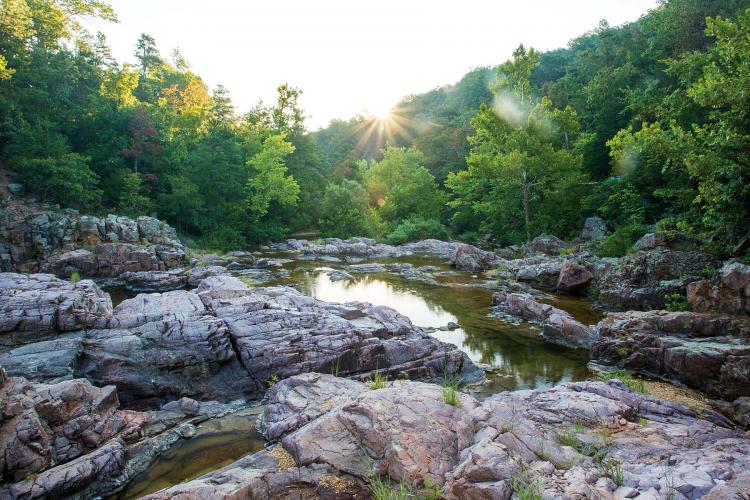
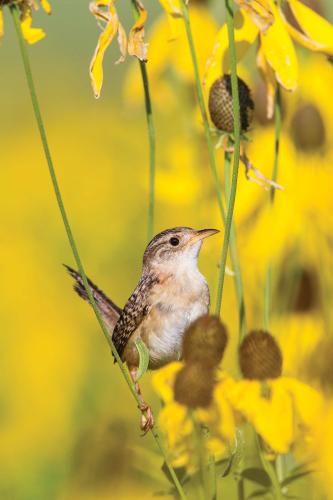
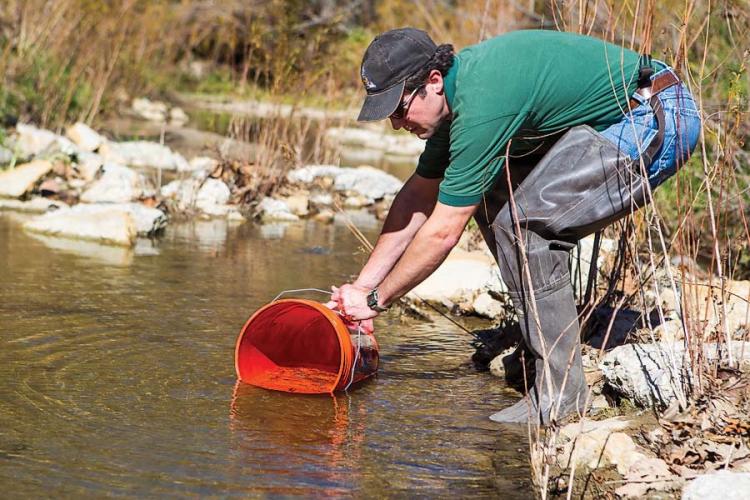
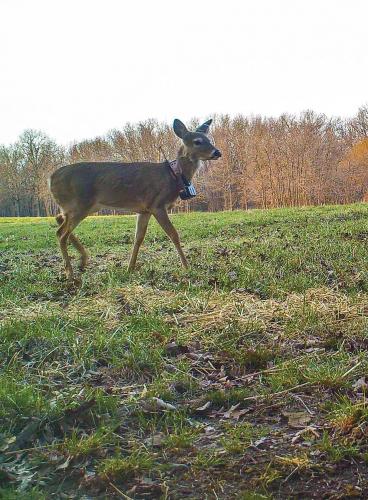
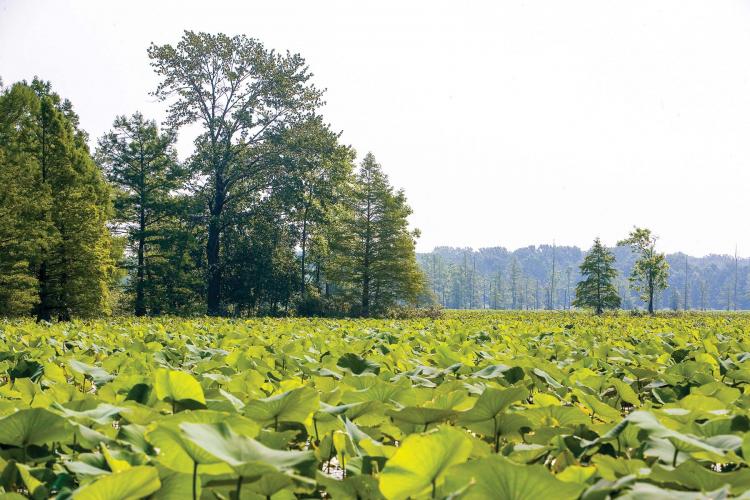
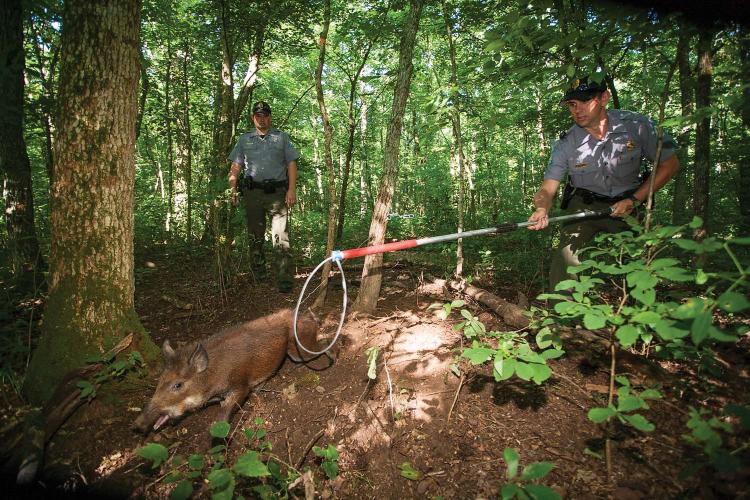

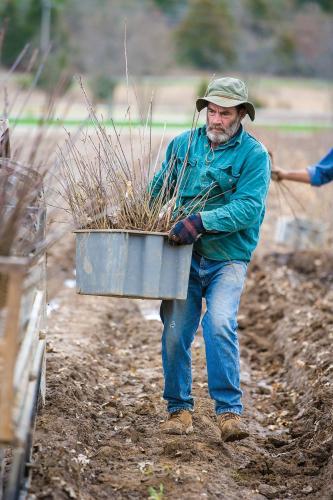
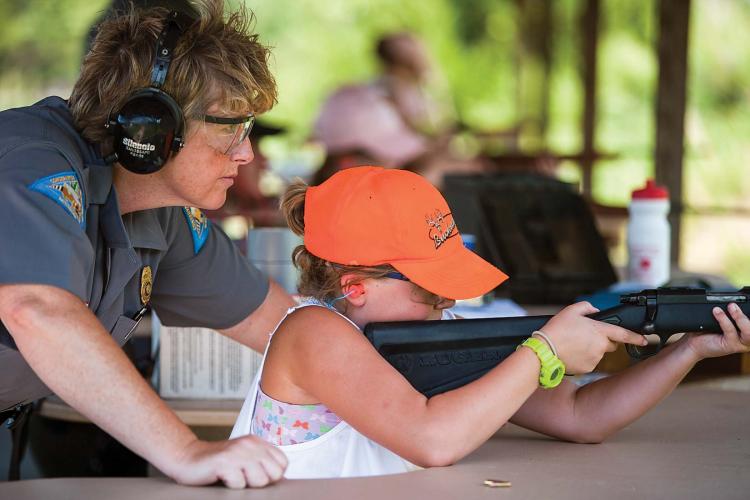
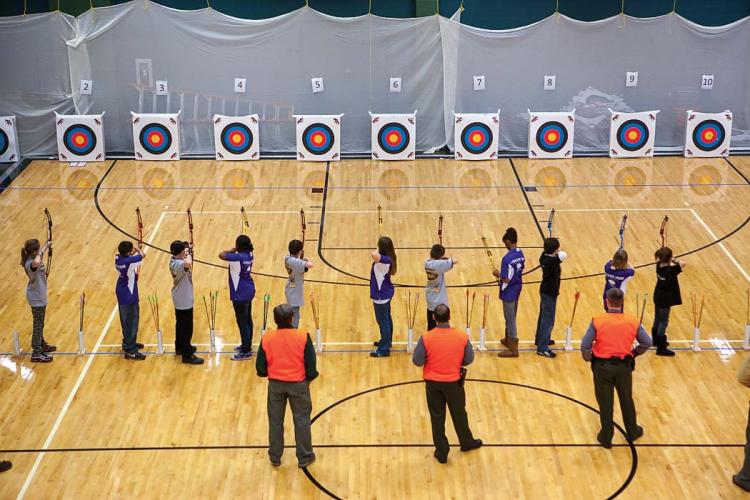

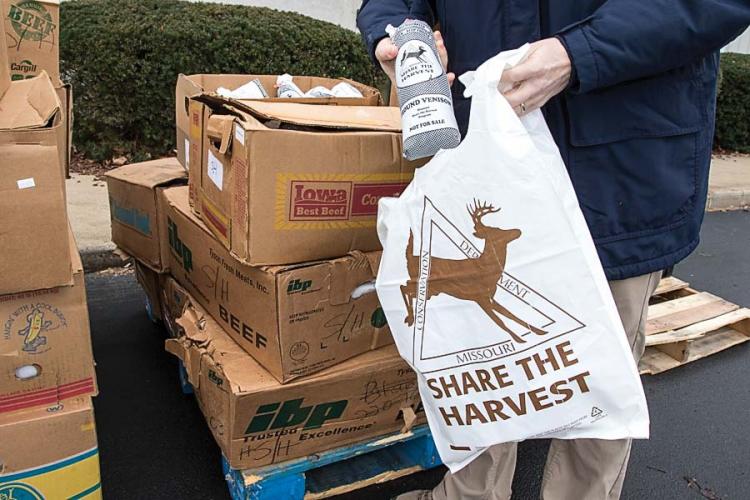
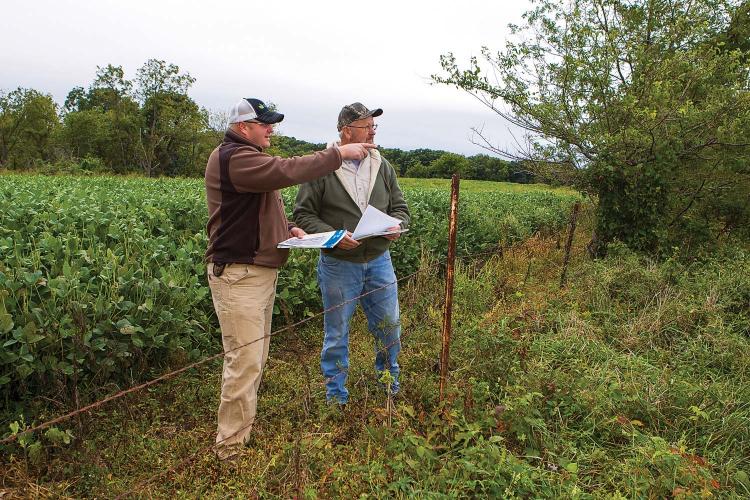
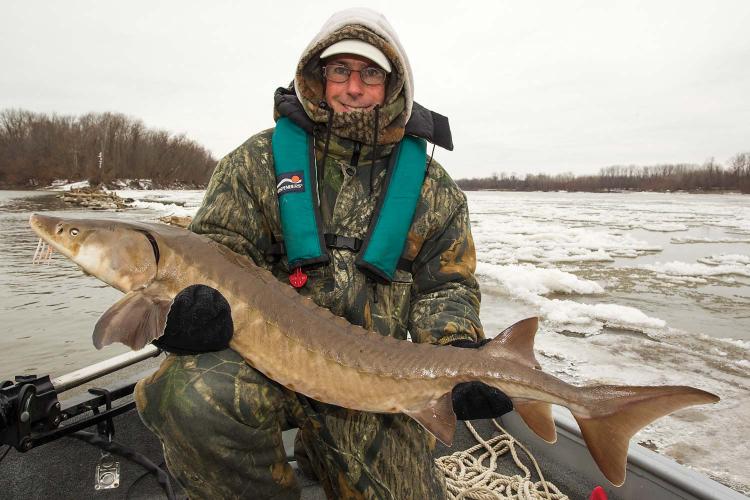
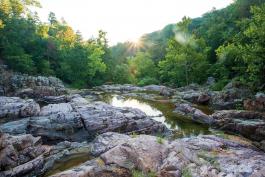
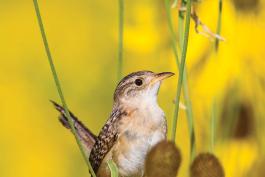
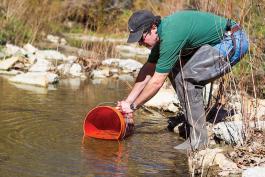
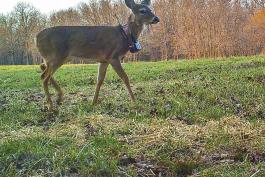
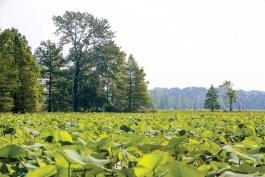
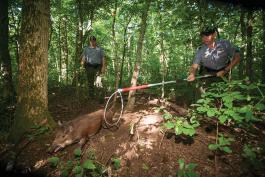

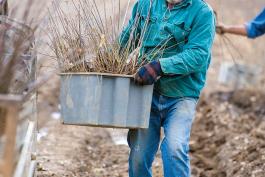
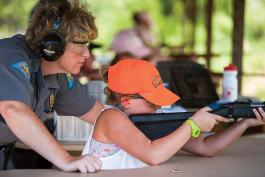

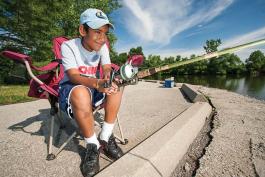
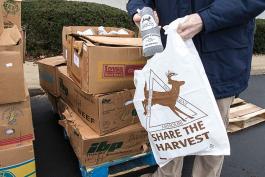

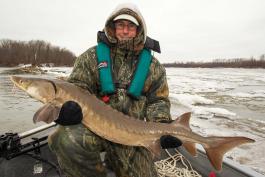
Also In This Issue
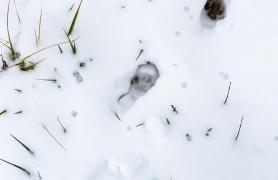

And More...
This Issue's Staff
Art Director - Cliff White
Associate Editor - Bonnie Chasteen
Staff Writer - Heather Feeler
Staff Writer - Kristie Hilgedick
Staff Writer - Joe Jerek
Photographer - Noppadol Paothong
Photographer - David Stonner
Designer - Les Fortenberry
Designer - Marci Porter
Designer - Stephanie Thurber
Circulation - Laura Scheuler






















